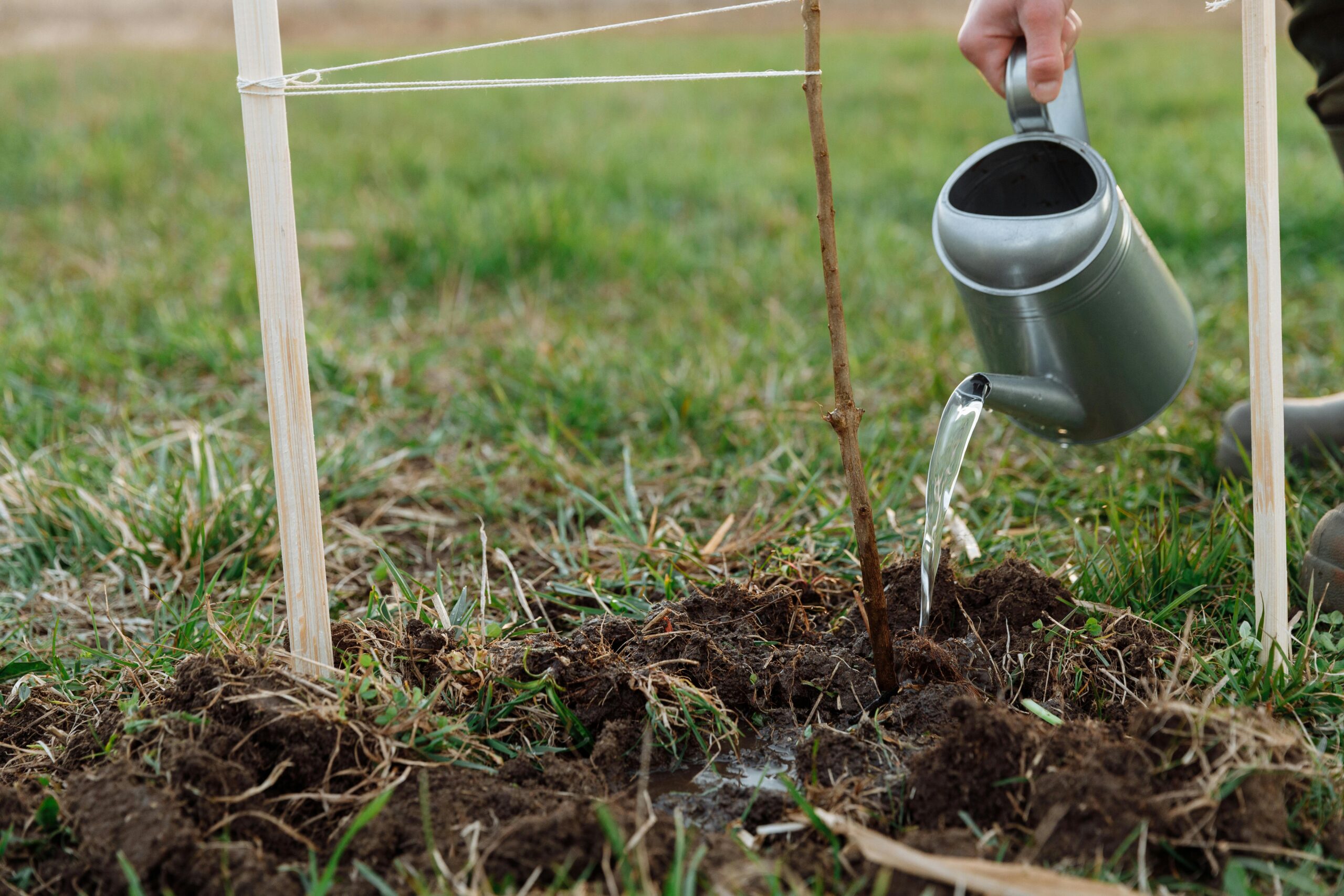
- Choose hardy, eco-sourced natives
Pick species suited to our localclimate and soils — tōtara, kōwhai, cabbage trees (tī kōuka), pittosporum, or kānuka thrive here. Eco-sourced plants support local biodiversity and are adapted to local conditions. We like Trees for Canterbury.
- Plant on calm, frost-free days
Winter’s moisture is great for establishing roots, but try to avoid planting during heavy frosts or sodden, waterlogged conditions.
- Prepare the site well
Clear competing grass and weeds in at least a 1m circle around the planting spot. This reduces competition for nutrients and water.
- Dig a roomy hole + break up the sides
Make the hole at least twice the width of the root ball. Roughen up the sides so roots can penetrate the soil rather than circling.
- Use mulch, but leave a gap around the trunk
A thick mulch layer (straw, bark, or shredded wood) helps keep soil moist and reduces weeds — but don’t pile it against the trunk, as that can cause rot.
- Guard against pests and wind
Install a plant guard or windbreak if the site is exposed. On Banks Peninsula, coastal winds can be fierce, so staking may also help young trees establish straight. This also helps to protect against pests like rabbits and possums.
- Water if it’s dry
Even in winter, if there’s a long dry spell, give your new trees a good soak.
- Plant with the future in mind
Think about spacing (give trees room to grow) and how the tree will fit into the landscape long-term.
